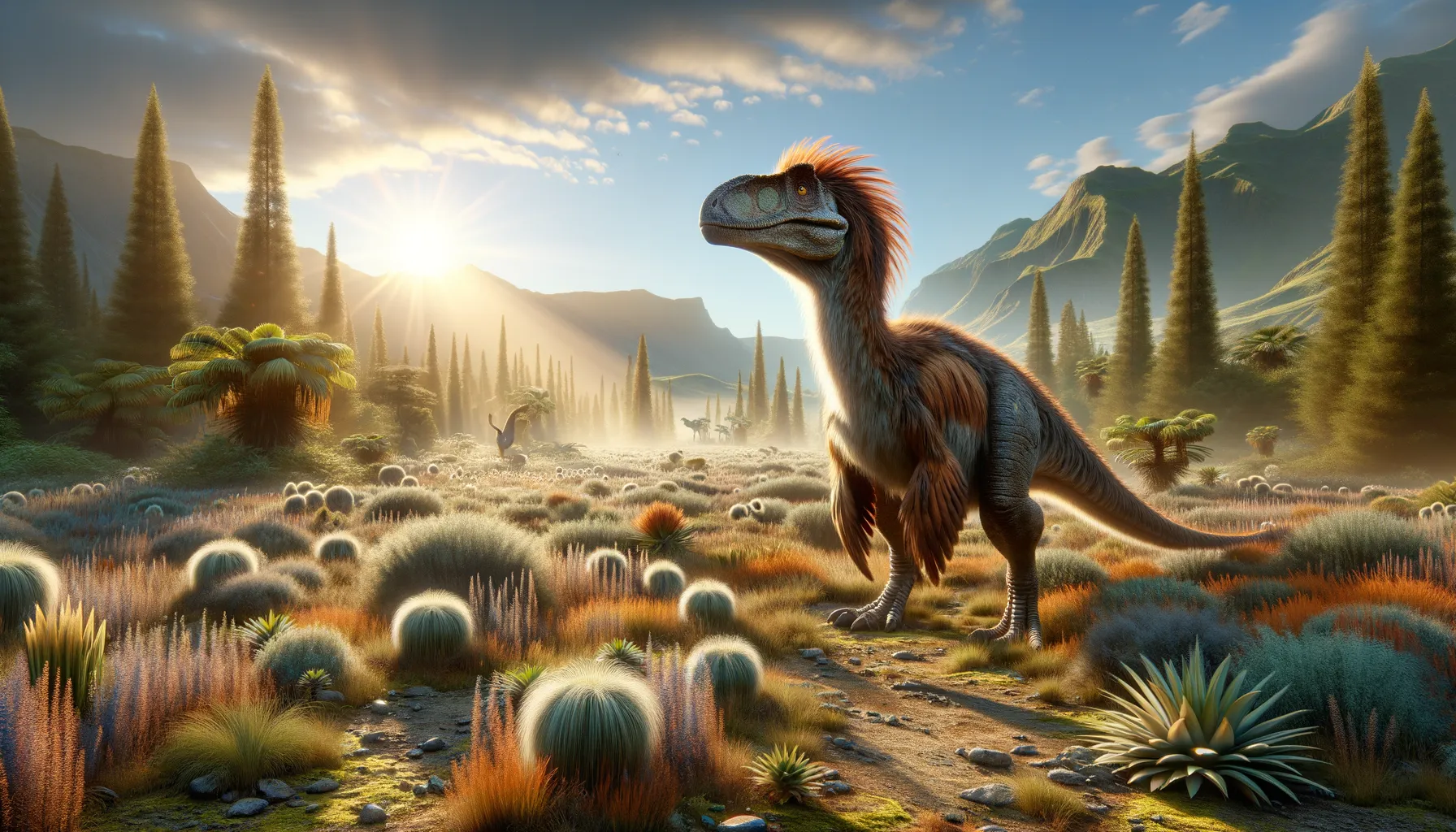
Ganzhousaurus
Bridging gaps in dinosaur evolution.
Period
Cretaceous
Length
Around 1.5 to 2 meters long.
Height
About 0.5 meters tall.
Weight
Approximately 15 to 20 kilograms.
Ganzhousaurus belongs to the oviraptorid theropods, a group known for their bird-like features. This dinosaur lived during the Late Cretaceous period in what is now modern-day China. It provides valuable insight into the diverse ecosystems that existed just before the extinction event that wiped out the non-avian dinosaurs. Its discovery adds to the growing list of feathered dinosaur species, further supporting the evolutionary link between dinosaurs and birds.
Diet
Ganzhousaurus was likely an omnivore, feeding on a varied diet of plants and small animals. Its beak-like snout would have been ideal for pecking at vegetation or small prey.
Hunting
Due to its size and build, Ganzhousaurus was more of a forager than an active hunter. It might have scavenged for food in its environment, taking advantage of its quick reflexes to snatch small creatures or eggs.
Environmental challenges
Ganzhousaurus lived in a time of significant environmental change leading up to the end of the Cretaceous. It faced challenges such as fluctuating climates and competition for resources with other species. Volcanic activity and shifting sea levels during this period would have also impacted its habitat, requiring adaptation to maintain its presence in the ecosystem.
Speed
Moderate speed suitable for short bursts.
Lifespan
Likely ranged from 10 to 20 years.
First discovery
Discovered in southern China in 2013.
Fun Facts
- Ganzhousaurus was a type of small theropod dinosaur that lived during the Late Cretaceous period.
- It was found in the Ganzhou Basin in southern China, which is famous for its rich dinosaur fauna.
- Ganzhousaurus is known for its bird-like features, hinting at its close evolutionary relationship with modern birds.
- The dinosaur had a lightweight body structure, suggesting it was a fast and agile runner.
- Despite its size, Ganzhousaurus likely had a varied diet, possibly including plants and small animals.
- Its discovery has helped scientists understand more about the diversity of theropods in its time.
- Ganzhousaurus is a great example of how some theropods were adapting to different ecological niches before the mass extinction event.
Growth and Development
Like other theropods, Ganzhousaurus likely grew rapidly in its juvenile stages to reach maturity. It would have undergone significant changes in its skeletal structure, maturing into a lifestyle that balanced foraging with evading predators. The development of its feathers may have played roles beyond insulation, serving functions in display or camouflage as it aged.
Habitat
Ganzhousaurus inhabited semi-arid environments interspersed with rivers and low-lying vegetation. This region allowed for varied diets and provided necessary resources such as water and nesting grounds. The changing climate of the Late Cretaceous influenced its habitat, which was crucial for maintaining its populations and facilitating its interactions within the ecosystem.
Interaction with other species
Ganzhousaurus coexisted with a variety of other dinosaurs, including herbivorous and carnivorous species. It likely exhibited cautious behavior around larger predators, using its quick reflexes for survival. Its relationship with other dinosaur species may have ranged from competition for resources to opportunistic scavenging alongside more dominant carnivores.
Natural lifespan
Ganzhousaurus lived for an estimated 10 to 20 years in the wild.
Reproduction
Ganzhousaurus, like many theropods, reproduced by laying eggs in nests. It is plausible that it engaged in basic nest protection, possibly using strategies to camouflage its eggs against predation. The reproduction cycle was pivotal to its survival, with the nurturing of hatchlings determining the longevity of its existence in challenging environments.
Social behaviour
Ganzhousaurus might have exhibited social behaviors typical of small theropods, such as forming loose groups or pairs during breeding seasons. These behaviors could have facilitated mate selection and increased the survival rates of its young. Interactions may also include vocal communication or visual displays involving its plumage.
Fossil locations
Fossils of Ganzhousaurus have been predominantly unearthed in the Ganzhou region of Jiangxi Province, China. The discovery of its remains in these sediment-rich environments offers critical data about the diverse ecosystems of the Late Cretaceous in this landmass. Ongoing excavations in this area continue to shed light on the intricate ecosystems in which this dinosaur lived.
